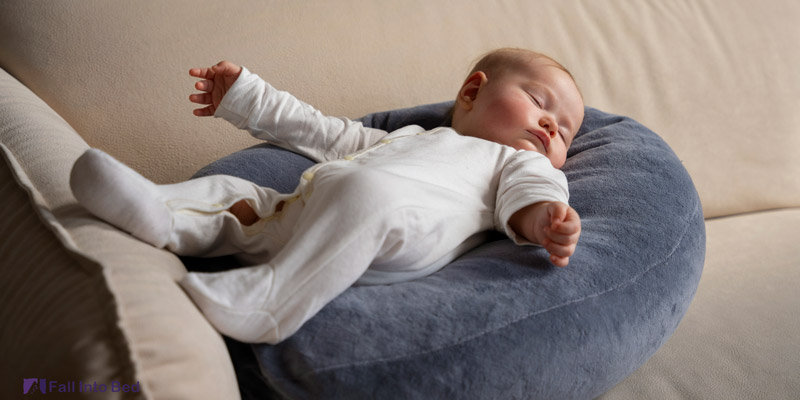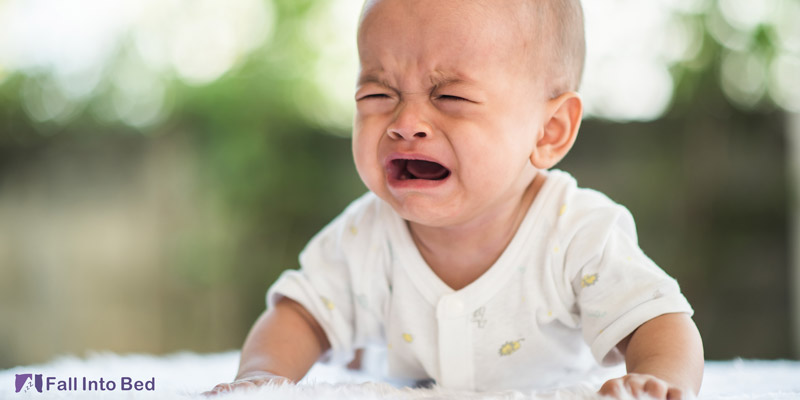Colic is not just any normal crying. It’s usually a prolonged intense crying and fussiness. And dealing with a colicky baby can be challenging. Finding the right position can help them alleviate some of the discomfort. So, let’s dive in to this article to find out the best sleeping positions for a colic baby and how to help them fall asleep.
Signs of a colicky baby
Colic is not just any regular crying. In order to realize if a baby is colic, there are certain signs that can help the parents to understand the situation. First thing you should know is that not all crying means colic. There is a rule of three about colic; If a baby cries for more than three hours a day, for three days a week and more than three weeks, it could be a sign of colic. Basically if your baby is not hungry, tired or sick and still cries all the time, it might be due to colic. Other signs can be:
- loud crying, apparently for no reason and typically around the same time of the day (often late afternoon or evening)
- arched back
- gets worse at night
- clenched fists
- The baby is healthy, no sign of sickness
- Baby’s face may become flushed
- Gassiness
Is colic the same as gas?
Basically colic and gas mostly have similar symptoms but they’re different to manage. Usually, we can easily manage a gassy baby with burping methods or changing their position. However, colic is mostly unexplainable and loud crying with no apparent reason.
Gas symptoms are common after feeding your baby. Whereas colic happens without any known reason in a certain age between 2 to 8 weeks after your baby’s birth.
What are the best sleeping positions for a colicky baby?
Back sleeping
One of the most recommended sleeping positions for babies, including a colic baby is sleeping on their back. The fist reason is that the AAP1 recommends to put babies to sleep on their back to avoid sudden infant death syndrome (SIDS) at least until they’re one year old. This position can also reduce the build-up gas in your infant’s tummy.

side hold
If the back sleeping positions not working, try side hold trick. For this position, hold your baby while they’re awake and place them on their side, near your stomach. and stabilize their head with your hand or forearm and gently rock them to sleep
stomach hold
Another way to hold your baby while they’re awake, is a stomach hold. make sure your baby is awake and supervised to avoid SIDS. You can hold your baby facedown and gently massage their back. This position can also release any gas build up in your baby.
Elevated head position
Another recommended sleeping position for a colic baby is when their head is elevated. Elevating the baby’s head slightly can help reduce discomfort from acid reflux, which can be a component of colic. You can place a pillow or a wedge under the crib mattress to create a inclined surface.
This position can also help with breathing and result in a better and more comfortable sleep.
What age is worst for colic?
Usually, colic starts around the age of 2 to 3 weeks and can continue to 6 to 8 weeks of age. During this peak ( 6 to 8 weeks) the signs can get more severe and after a few days the symptoms disappear. It’s important to rule out any other reason your baby might be crying about like being hungry, tired, uncomfortable with a clothe or a loud environment.

How to help a colic baby fall asleep?
1. Swaddle
Sometimes it’s helpful to swaddle your baby in a comfortable blanket. This position can remind them of the womb and calm them down.
2. Sleep techniques
There are useful tricks to use, to make your baby fall asleep in under a minute. Such as the famous tissue trick or using different sounds and machone to help your baby calm down and fall asleep.
3. Burp them after feeding
Make sure the is no additional gas left in your baby. Use burping techniques to comfort your baby after feeding, to avoid any fussiness due to build-up gas.

4. white noise machine
A calming environment is a must, if you want your baby to fall asleep during their colic phase. Using soothing sounds like rain or waterfall, or simply using a white noise machine can be very effective to put your baby in a sleepy mood.
5. Rocking
You can also rock your baby to sleep in your arms or their crib. But make sure you don’t hold them before sleep every time, as they might get used to it and only fall asleep when they’re being held.
Some babies might refuse to sleep in the crib, especially at some specific ages. By knowing the reason why your baby might not like the crib and help them get more comfortable in their crib.
6. Pacifier or comfort item
Babies can easily get anxious if their favourite stuffed animal or pacifier isn’t in their hands. But make sure the items are safe to be around them if they fall asleep near them. It’s important to know when a baby can sleep with stuffed animals. Some are too young for it.
FAQ about sleeping positions for colic baby
1. What is the most comfortable position for a colic baby?
Babies love skin-to-skin contact. One of the best positions is to hold them on their side, and near to your chest or belly with a skin contact.
2. Does colic get worse at night?
Yes! fussiness and crying due to colic gets worse at nights. And it usually happen in the late afternoon and evening. Some studies show that it’s due to the serotonin level which is at its peak in the evening.
- American Academy of Pediatrics ↩︎








